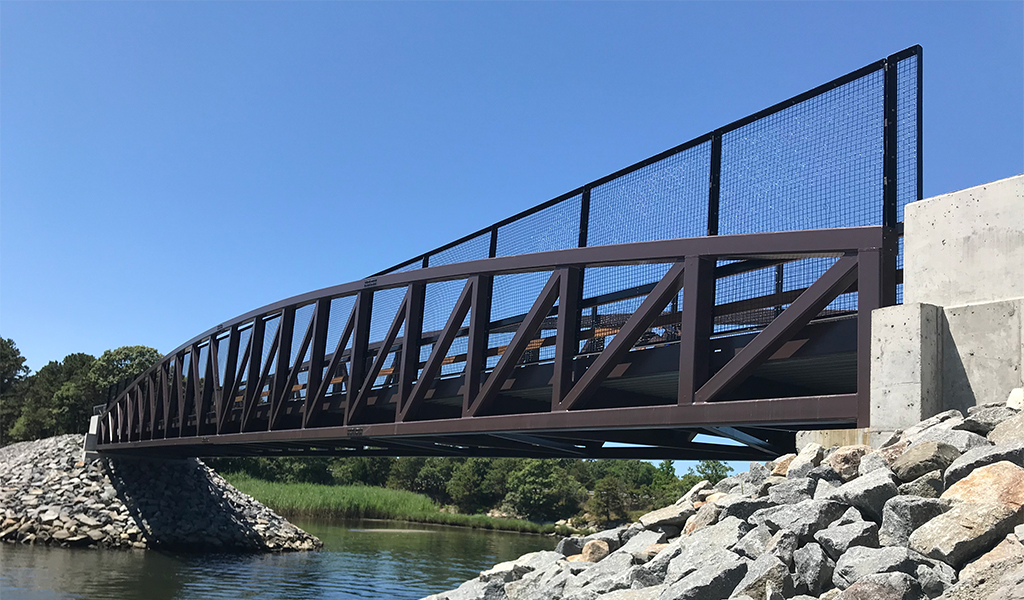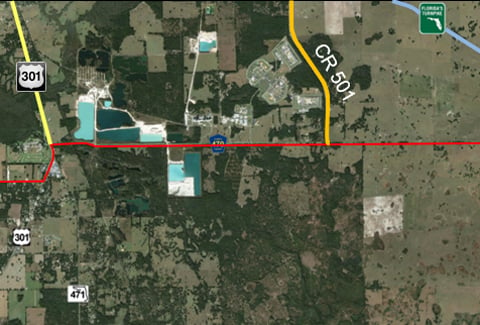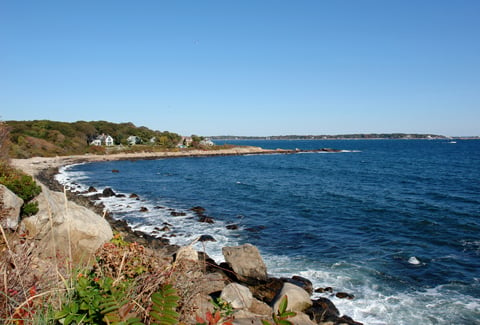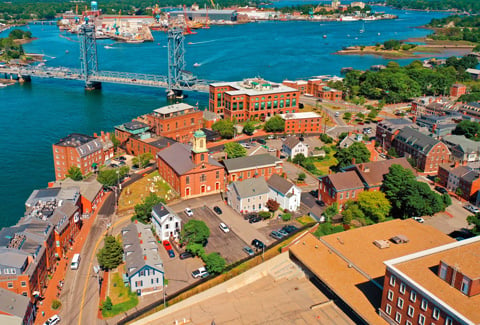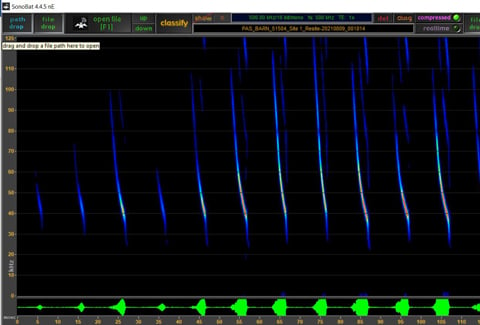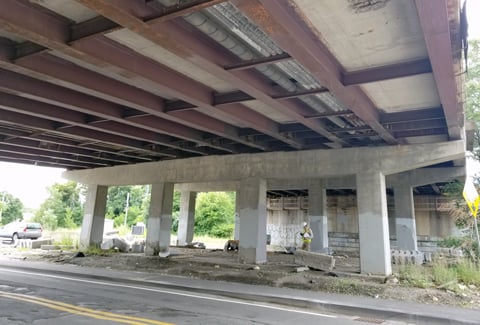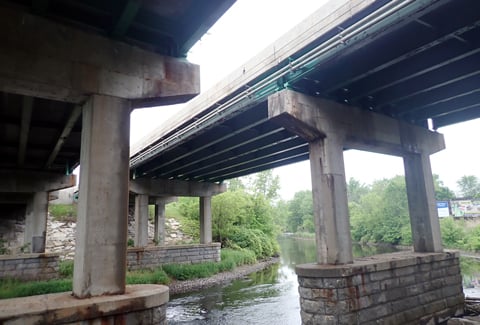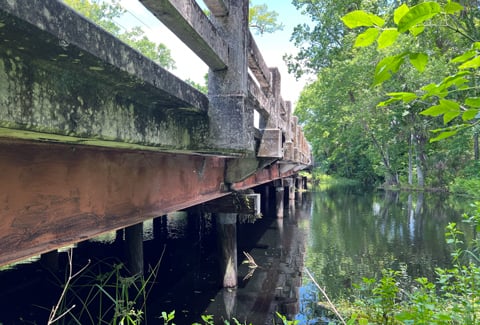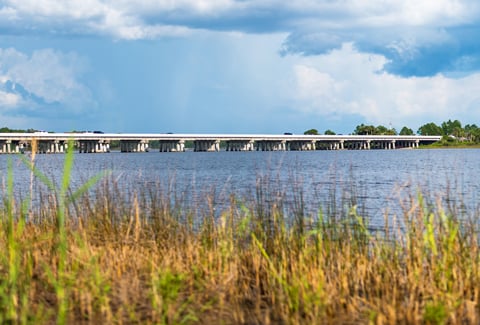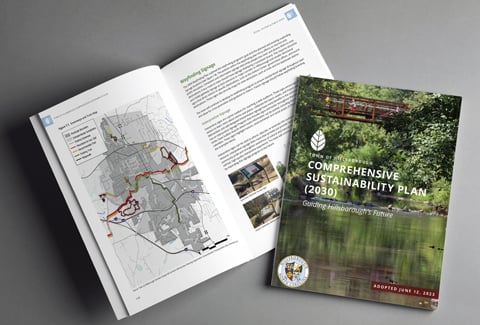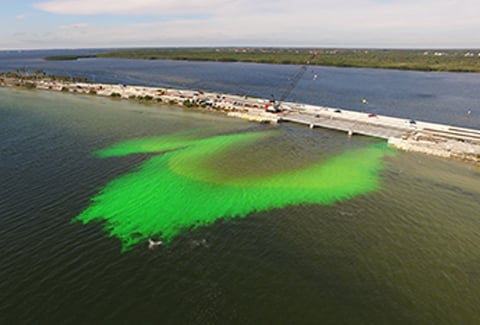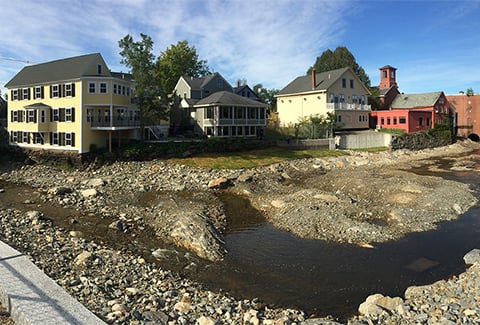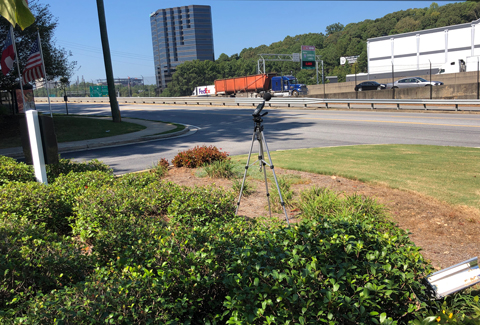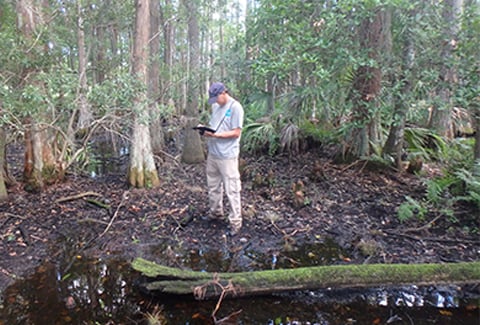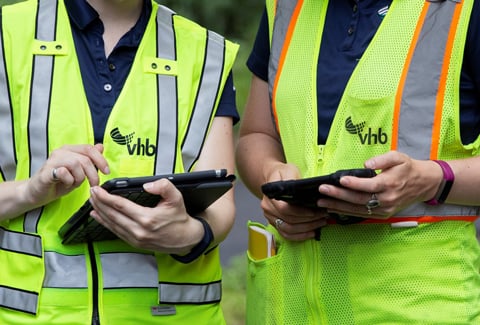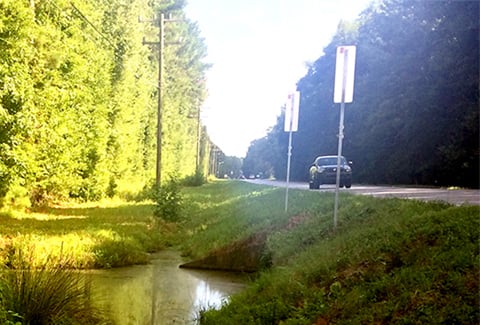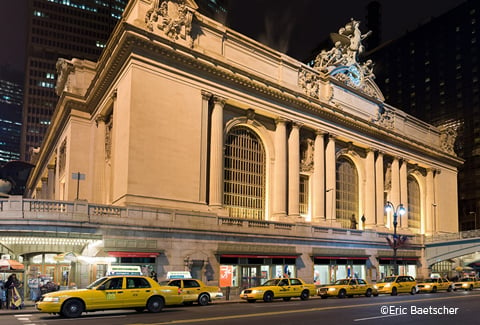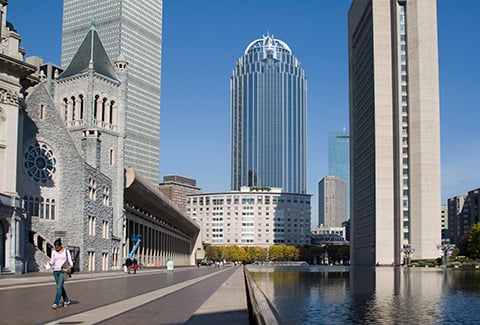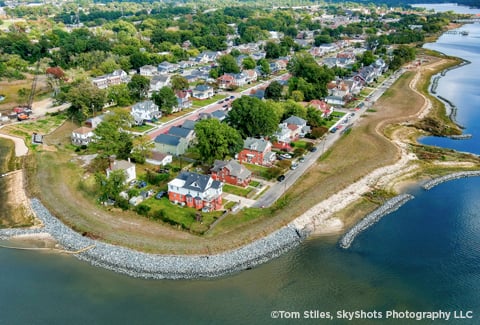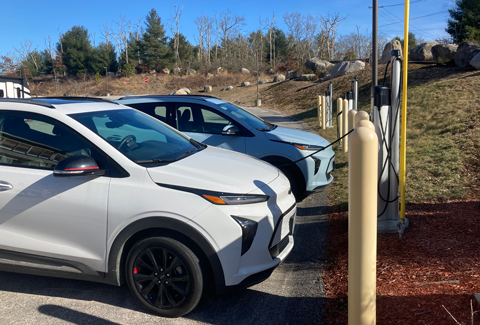The Cape Cod Rail Trail (CCRT) is expanding eight miles to increase connectivity and recreation in Dennis, Yarmouth, and Barnstable, Massachusetts. This project will extend the current 22-mile trail from Wellfleet to Barnstable, with plans to reach Sandwich and the Cape Cod Canal recreational path. VHB is managing the project, which includes a multi-use path, the construction of four key alternative pedestrian bridges, and numerous infrastructure improvements.
Construction for Phases 1 and 2 (covering Dennis and Yarmouth) completed in 2017 and 2018, respectively, with construction of Phase 3 (Barnstable) beginning in early 2025. VHB is also designing Phase 4, extending the trail westward to the Barnstable-Sandwich Town Line, adding nine miles. Once complete, this extension will seamlessly integrate with existing trails, promoting outdoor activities and practical transportation alternatives.
The CCRT extension crosses the Bass River at its most restrictive hydraulic opening on the tidal river, which features restricted tidal exchange and boat navigation hazards. VHB led the hydraulic analysis to evaluate four alternative pedestrian bridge designs, developing an unsteady-state model using HEC-RAS software to simulate tidal flushing and identify hydraulically viable abutment alternatives. VHB used the model to evaluate alternative larger bridge openings, assessing benefits to tidal exchange and navigation and potential impacts to flood levels during extreme events. The new pedestrian bridge increases tidal flushing of the river system and improves navigation.
Social—The CCRT extension will improve recreational opportunities for residents and visitors by connecting parks and open spaces. This segment will foster healthier lifestyles by encouraging biking, walking, and running. By linking with existing and future trails, it will create a comprehensive network enhancing outdoor engagement for the community. The design prioritizes accessibility, allowing for all to enjoy Cape Cod’s natural beauty.
Environmental—The extension will enrich the local ecosystem by integrating native plant species along the trail, promoting biodiversity and supporting local wildlife habitats. These plantings will not only beautify the area but will also improve water quality by utilizing vegetation that reduces runoff and filters pollutants.
Economic—Property values near the trail are expected to increase, as access to recreational amenities often attracts potential buyers. The trail’s new connections to shopping centers and villages will stimulate local businesses and create jobs, serving as a catalyst for sustainable economic growth within the region.

